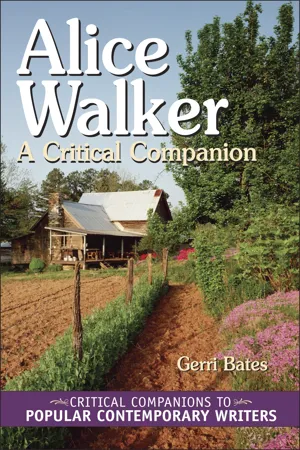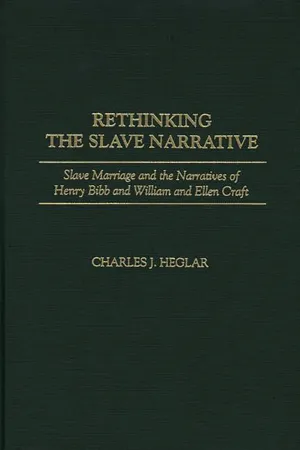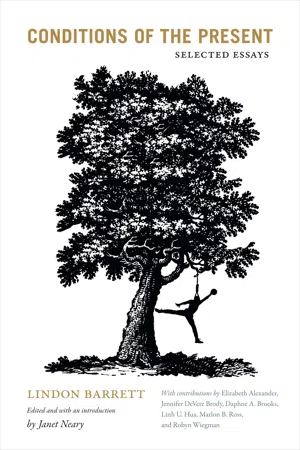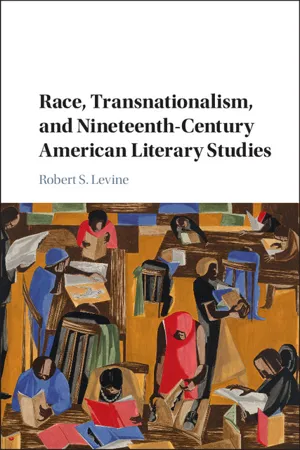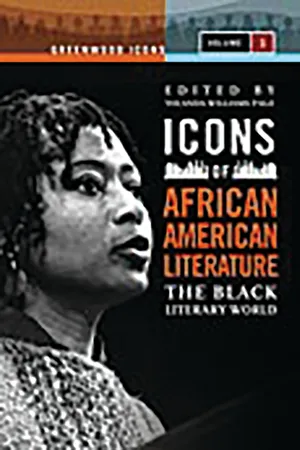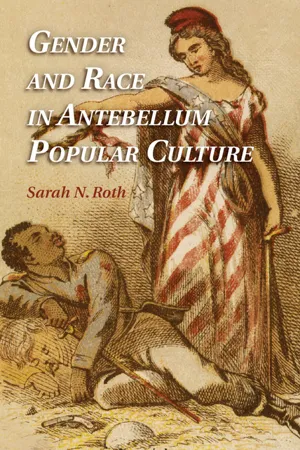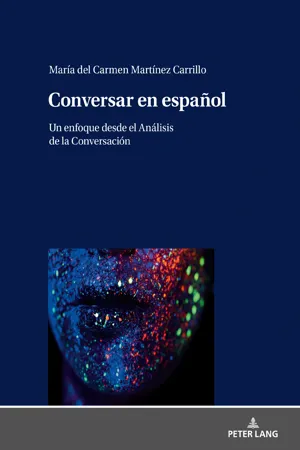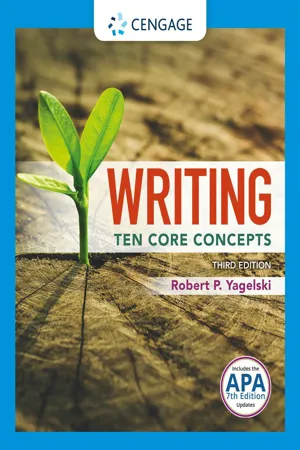Literature
Slave Narrative
A slave narrative is a literary genre that presents the autobiographical accounts of enslaved individuals. These narratives provide firsthand perspectives on the experiences of slavery, including the hardships, abuse, and struggles for freedom. They serve as important historical and cultural documents, shedding light on the inhumane treatment of enslaved people and their resilience in the face of oppression.
Written by Perlego with AI-assistance
Related key terms
1 of 5
10 Key excerpts on "Slave Narrative"
- eBook - PDF
Alice Walker
A Critical Companion
- Gerri Bates(Author)
- 2005(Publication Date)
- Greenwood(Publisher)
Characteristically, autobiographical Slave Narratives are narrative, auto- biography, and epic. Most importantly, their narrative formats have story lines that give historical accounts of oppressors and oppressed people and include as protagonists escaped slaves who emancipate themselves through the assistance of abolitionists and other sympathizers. Equally important, as autobiography the Slave Narratives center on the saga of the self in triumphing over existential, historical, and social hindrances. Above all, in these narratives as epics the protagonists are symbolic heroes who personify cultural archetypes that represent the desires of a people. These heroes are examples of African trickster figures that connive and scheme against the presumed mental superiority of slave owners to emerge victorious against overwhelming odds. Crucial to the legitimacy of autobiographical Slave Narratives is the fact that they are grounded in truth, providing actual details of a horrific institution and giving vivid accounts of births, parentage, deaths, whippings, hard labor, task masters, cruel owners, familial dissolutions, insufficient necessities, slave auctions, slave patrols, name changes, and escapes. The narratives provided white audiences with documentary material and social and political evidence that would propel abolitionists and sympathizers alike 28 Alice Walker to take a pro-emancipation platform and work to abolish slavery in all territories where it existed. Frederick Douglass's Narrative of the Life of Frederick Douglass, An American Slave, Written by Himself (1845) epitomizes the classic Slave Narrative in its episodic presentation of the realities of slavery and skilled incorporation of narrative, autobiography, and epic. - eBook - PDF
Rethinking the Slave Narrative
Slave Marriage and the Narratives of Henry Bibb and William and Ellen Craft
- Charles J. Heglar(Author)
- 2001(Publication Date)
- Praeger(Publisher)
2 The Slave Narrative Genre THE "CLASSIC" Slave Narrative As a literary or historical designation, the term "Slave Narrative" includes many kinds of texts, which constitute a heterogeneous genre. According to the Oxford English Dictionary, in its initial sense—"that part of a deed or document which contains a statement of the relevant or essential facts"—the term "narrative" entered English usage from the Scottish. In colonial America, "narrative" was applied to a variety of autobiographical accounts, which emphasized factuality, such as spiritual conversion, Indian captivity, and criminal confession, whether these accounts were attributed to whites or blacks. In the nineteenth century the tales of fugitive slaves of- ten bore the word "narrative" as a prominent part of their titles, promising factuality and giving rise to the phrase "narratives of (ex)slaves." By the twentieth century, as the narratives of slaves became the objects of histori- cal and literary study, the designation "Slave Narrative" gained currency, leading to the identification of conventions and the establishment of a dis- tinguishable genre. Generally, Slave Narratives can be separated into three broad historical phases: the proto Slave Narratives of the colonial and early national periods, 8 Rethinking the Slave Narrative the antebellum Slave Narratives written between 1830 and 1861, and the postbellum works published after the Civil War. Within and among these historical periods, further distinctions can be made among narratives on the basis of thematic development, authorship, and length. An important consequence of these subdivisions and distinctions is the growing critical consensus that book-length, antebellum narratives authored by ex-slaves form a significant subgenre. In order to avoid confusion and to impose lim- its on my statements about the works discussed, I have designated self-authored, book-length, antebellum Slave Narratives as "classic" Slave Narratives. - eBook - PDF
Bearing Witness
Contemporary Slave Narratives and the Global Antislavery Movement
- Andrea Nicholson(Author)
- 2022(Publication Date)
- Cambridge University Press(Publisher)
19 1 A Narrated Self The Slave Narrative Genre Historical Slave Narratives were “intensely political documents,” 1 con- tributing to debates, democratization, perspectives on freedom, and chal- lenges to ideologies. 2 The act of speaking out was a way of confronting prejudice and racism, “an open act of rebellion … a declaration of one’s rights to speak,” 3 and their narratives were a form of protest literature used as proselytizing tools where language was used to “transform the self and change society … functioning as a catalyst, guide, or a mirror of social change.” 4 Historic Slave Narratives not only critiqued an aspect of society but also suggested, “either implicitly or explicitly, a solution to society’s ills … striving to give voice to a collective consciousness, uniting iso- lated or inchoate discontent.” 5 Narratives were therefore not just about moral suasion; they were also a move to political action, resistance, and revolt. For example, the abolitionist and survivor Olaudah Equiano used white men’s belief systems and racial discourse to argue for abolition and “undermine the colonial narrative and reformulate that culture’s notion 1 Audrey Fisch, ed., The Cambridge Companion to the African American Slave Narrative (Cambridge: Cambridge University Press, 2007), 28. 2 Audrey Fisch, ed., The Cambridge Companion, 29. 3 Noreen Connell and Cassandra Wilson, eds., Rape: The First Sourcebook for Women by New York Radical Feminists (New York: The New American Library, 1974), 27–28. 4 Lawrence Aje, “Fugitive Slave Narratives and the (Re)presentation of the Self? The Cases of Frederick Douglass and William Brown,” L’Ordinaire des Amériques 215 (2013): 7; John Stauffer, “Foreword,” in American Protest Literature, ed. Zoe Trodd (Cambridge, MA: Harvard University Press, 2008), xii. 5 John Stauffer, “Foreword,” xii. - eBook - PDF
Conditions of the Present
Selected Essays
- Lindon Barrett, Janet Neary(Authors)
- 2018(Publication Date)
- Duke University Press Books(Publisher)
However, Slave Narratives entered academic concerns far afield from elabo-ration of issues of culture and power as construed by cultural analysis. These texts entered the academy within the terms of a debate concerning their legiti-macy as historiographical evidence of U.S. slaveholding society. A rehearsal of the central concerns of this debate forms the greater part of John Blassingame’s introduction to the anthology Slave Testimony . Preoccupied with “the reliabil-ity of various sources,” this debate illuminates the status of Slave Narratives as gauges of or monuments to a compelling social reality, a series of past events accessible beyond provisional representation within any text or collection of texts. 2 This positive status was withheld from Slave Narratives for most of the twentieth century because of reservations about the influences of editors and amanuenses, or conversely the very literacy of the ex-slave, as well as the skewed sample of the slave population that produced the narratives. As these concerns were overcome, the narratives attained a more widespread currency within the academy. Frances Foster’s 1979 Witnessing Slavery provides the first published full-length literary study of the narratives. It examines the social and historical conditions of their production and peculiarities of plot construction, as well as their nineteenth-century readership and popularity. 3 Foster’s study obliquely reflects what became an overriding consensus among African-American literary critics for the 1980s. The status of the Slave Narrative as a reliable redaction of matters beyond its text was bracketed in deference to considering the text as an artifact open to investigation itself. Foster, to this 94 Chapter four end, provides an examination of important forces influencing the production of the artifact. - Robert S. Levine(Author)
- 2017(Publication Date)
- Cambridge University Press(Publisher)
3 84 Race, Transnationalism, and American Literary Studies Truth’s skeptical account of black “freedom” in the racist North went against the grain of most antebellum Slave Narratives, which, despite their depictions of Northern racism, typically charted the movement of the black male narrator from what Douglass termed “the tomb of slavery, to the heaven of freedom.” This movement, or progress, was hailed by sympathetic readers of the time as typically American, a raced version of Benjamin Franklin’s archetypal account of his “American” rise from rags to riches. In a lecture of 1849, the abolitionist Unitarian minister Theodore Parker celebrated Slave Narratives as the most distinctively American lit- erature yet produced in the new nation, the very texts, he asserted, which contained “all the original romance of Americans in them.” For Parker, Slave Narratives offered black voices and perspectives that could not be found “in the white man’s novel” and that harkened back to the revolu- tionary spirit of the nation’s founding. Clearly, he discerned in these narratives much more than the political desires of their white abolitionist sponsors. 4 Still, recent book-history approaches to African American literature have raised new questions about the genre of the Slave Narrative. Michaël Roy, for instance, asserts that “Slave Narratives did not constitute a mono- lithic genre”; and he goes on to argue that because each work “occupied a different space in antebellum print culture,” specific texts must be analyzed in relation to such factors as their material form, circulation, and intended audience. 5 While I am sympathetic to such approaches, which are useful for all forms of writing and not just Slave Narratives, I continue to think that there is considerable value in studying narrative tactics, self-character- ization, and intertextuality in works that, both in their own time and beyond, were regarded as constituting something like a genre.- eBook - PDF
Puttin' on Ole Massa
The Slave Narratives of Henry Bibb, William Wells Brown, and Solomon Northup
- Bibb Henry, Northrup Solomon, William Wells, Northup Solomon, Gilbert Osofsky(Authors)
- 2022(Publication Date)
- Advanced Reasoning Forum(Publisher)
Introduction Puttin' On Ole Massa: The Significance of Slave Narratives "The only weapon of self defence I could use successfully, was that of deception." Narrative of the Life and Adventures of Henry Bibb, An American Slave (New York, 1849), p. 17. "Ever after I entertained the first idea of being free, I had endeav- ored so to conduct myself as not to become obnoxious to the white inhabitants, knowing as I did their power, and their hostility to the colored people. The two points necessary in such a case I had kept constantly in mind. First, I liad made no display of the little prop- erty or money I possessed, but in every way I wore as much as possible the aspect of slavery. Second, I had never appeared to be even so intelligent as I really was. This all colored people at the south, free and slaves, find it peculiarly necessary for their own comfort and safety to observe." The Narrative of Lunsford Lane, Formerly of Raleigh, North Carolina (Boston, 1848), p. 31. The Slave Narratives are tales of bondage and freedom written or told by former slaves. There are many thousands of such narratives if one includes the stories of fugitives collected by antislavery ad- vocates and published in the abolitionist press, or those gathered for publication in nineteenth- and twentieth-century documen- tary accounts. Brief descriptions of slavery from the mouths of those who lived it appear in many nineteenth-century books, such as William Still's The Underground Rail Road (1883), Levi Coffin's Reminiscences (1876), Benjamin Drew's North-Side View of Slavery (1856), Lydia Maria Child's Isaac T. Hopper: A True Life (1854), Wilson Armistead's A Tribute for the Negro 10 Puttin' On Ole Massa (1848). The WP A slave-narrative collection in the Library of Con- gress runs to seventeen volumes. 1 Perhaps most remarkable of this extensive literature are the four-score full-length autobiographies of slaves published before the Civil War. - eBook - PDF
Icons of African American Literature
The Black Literary World
- Yolanda Williams Page(Author)
- 2011(Publication Date)
- Greenwood(Publisher)
Although some readers held the narrative writers up as a rare example of excellence, many others used those same writers as symbols of the race at large. Publishing a successful Slave Narrative sometimes led to a career in speak- ing, as it did with Frederick Douglass. Such writers went on the lecture circuit to more widely spread their tales of slavery and to work for the abolition movement. Some, again, like Douglass, became abolitionist leaders in their own right. Overall, the Slave Narrative opened up many creative possibilities for the African American. It also led to a series of fictionalized slave narra- tives and novels that revolved around the issues of slavery. Sometimes it led to white writers attempting to hijack the genre in order to find success in the publishing world. While some Slave Narratives never found their way to publication, others were published but faced minimal sales. Some of these were lost to literary history for years. Recent decades have led to more and more exciting discov- eries of formerly forgotten African American literature texts, Slave Narratives included. On the other hand, several Slave Narratives enjoyed critical and sus- taining success and found their way into literary studies early on in the 20th century. It is these texts that are viewed as icons of the genre. The first critically important Slave Narrative, and the narrative that contin- ues to serve as example and template in contemporary studies of the genre, is The Interesting Narrative of the Life of Olaudah Equiano, or Gustavus Vassa, the African, Written by Himself. Published in 1789 in London, Equiano’s Slave Narrative both compares and contrasts to that of Gronniosaw. Certainly both men use long titles lending to self-description, a practice that was common in 18th-century British and then American literature. Unlike Gronniosaw, Equi- ano was literate and penned his narrative himself. - Sarah N. Roth(Author)
- 2014(Publication Date)
- Cambridge University Press(Publisher)
It made good sense for slave narrators to recount their lives in bondage as a story of devastating persecution if they wanted their texts to succeed in converting compassionate white northerners to the antislavery cause. Only the most callous of readers could have remained unmoved by the suffering these authors described. 12 The black men who authored Slave Narratives of the 1840s, however, wanted the respect as well as the sympathy of white readers. Former slaves chafed at the restrictions antislavery leaders placed on their oratory in order to make sure these black men conformed to stereotypical ideas of slaves’ limited intelligence and refinement. For Frederick Douglass, going along with this white abolitionist strategy meant surrendering the assertiveness, mental aptitude, and strong moral sense required in the antebellum period of those considered true men. Loathe to do so, Douglass struggled with white abolitionist leaders over his right to assert himself as a man rather than appear merely as a martyr in front of mostly white crowds. Although he undoubtedly showed more restraint than he wanted to, Douglass recalled that he could never bring himself to curtail the expression of his own manhood entirely when he recounted his story at public meetings or in his published writings. Douglass admitted he “could not always obey” the injunctions he received from white men like Collins, because, as the former slave explained it, “it did not entirely sat- isfy me to narrate wrongs; I felt like denouncing them.” 13 12 Moses Grandy, Narrative of the Life of Moses Grandy; Late a Slave in the United States of America (London: C. Gilpin, 1843; three printings in Boston in 1844), 10–11; Josiah Henson, Truth Stranger Than Fiction: Father Henson’s Story of His Own Life (Boston: J. P. Jewett and Company, 1858), 19; Bibb, Narrative, 44. 13 Douglass, My Bondage and My Freedom, 361–362.- eBook - PDF
Teaching Double Negatives
Disadvantage and Dissent at Community College
- Robert Cowan(Author)
- 2019(Publication Date)
· 7 · NEIGHBORHOOD Slave NarrativeS Freedom from Captivity, in Theory and Praxis It is well known that African American Slave Narratives have their roots in earlier captivity narratives, such as those by American settlers held captive by Native American tribes or those by British sailors taken prisoner off the Barbary Coast of Africa. This is, however, not particularly well known by my students at Kingsborough before they arrive in my classroom. They have never heard of the 1682 narrative of Mary Rowlandson, a colonist captured by Narragansett Indians during King Philip’s War and held for eleven weeks, entitled The Sovereignty and Goodness of God, which testifies to her faith in an omnipotent and benevolent deity who delivers her from her savage captors. Nor do they know Captain James Riley’s 1817 Sufferings in Africa, in which Riley recounts in gruesome detail his shipwrecked crew’s enslavement by Arab traders in what is now Algeria and describes being marched naked across the Sahara for days on end with little more than camel urine as nourishment. His crewmembers’ flesh is literally roasted off them, but Riley’s Christian faith— his faith in the inevitability of his deliverance, despite the delirium and phys- ical destruction—buoys him through this ordeal. 1 What my students are more familiar with, at least theoretically, are the Slave Narratives that grew out of these earlier captivity narratives, in which 92 teaching double negatives roles associated with skin color are reversed. No longer is the British sailor or American colonist the victim of the savage Indian or the dark despotic Arab. Instead, the stolen African suffers under the yoke of slavery at the hands of brutal white masters. These are archetypes that students recognize, from films or popular culture, if not from the actual writings. - Robert Yagelski(Author)
- 2021(Publication Date)
- Cengage Learning EMEA(Publisher)
Due to electronic rights, some third party content may be suppressed from the eBook and/or eChapter(s). Editorial review has deemed that any suppressed content does not materially affect the overall learning experience. Cengage Learning reserves the right to remove additional content at any time if subsequent rights restrictions require it. 556 Chapter 17 | Writing Literacy Narratives essential skill in modern life; it is central to how we live and work. That fact alone makes literacy worth studying, and literacy narratives are an effective vehicle for such study. They can help us understand the role and significance of literacy, not only in our own lives but also in society more generally. Occasions for Literacy Narrative Simply put, a literacy narrative is a personal narrative in which the writer tells the story of an experience involving reading or writing—for example, being placed in a special reading class in elementary school. Writing a literacy narrative about such an experience is a way to explore the role of literacy in important aspects of our lives, such as school or work, and to understand how literacy helps shape who we are as human beings. Often, when literacy narratives are assigned in college courses, the purpose is not only to examine the role of literacy in our individual lives but also to gain insight into the nature of literacy and how it functions in our communities. In fact, scholars study literacy narratives to learn how literacy functions in individual lives and within various contexts. For example, Patrick Berry, a scholar who studies literacy, has used literacy narratives to examine the role of literacy and education in the lives of inmates at a prison. Scholars have used literacy narratives to examine the literacy practices in religious communities, within various professions, among people with disabilities, and in many other contexts.
Index pages curate the most relevant extracts from our library of academic textbooks. They’ve been created using an in-house natural language model (NLM), each adding context and meaning to key research topics.
